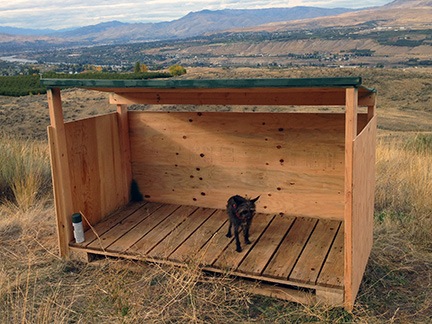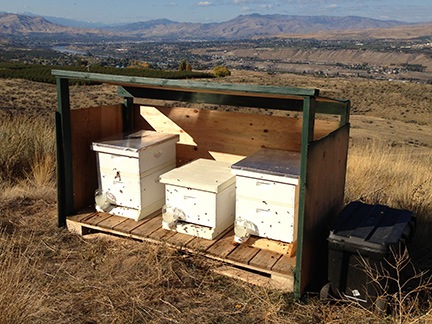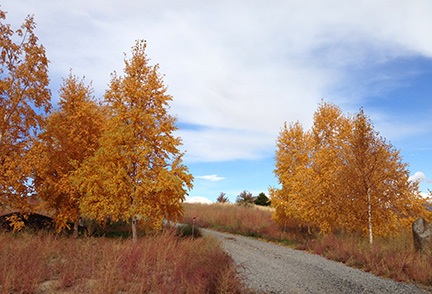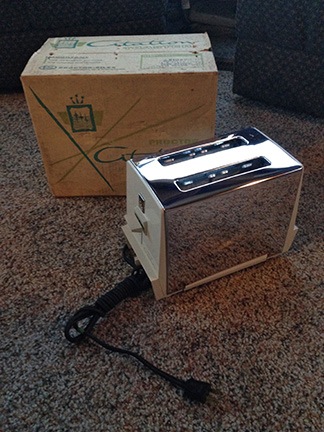I bring my bees to my Malaga home.
Although I started keeping bees back in June 2013, I didn’t have my own place to keep them until much later that summer. Some beekeeping friends of mine generously offered to let me keep them on their very large lot in North Wenatchee. Jim set up an area for me that included a raised platform and even went with me when I bought the bees, in a nuc, and brought them back to their new home. I blogged about that here.
Later, I caught a swarm, which gave me a second hive. Because that happened right around the time I was moving to a friend’s property in Wenatchee Heights, I set that hive up there. Still later, when I decided to split my original hive to prevent them from swarming, I set up that third hive at my temporary home in Wenatchee Heights. Later in the summer, the lack of food there made it more practical to keep all my hives together in North Wenatchee where there was ample clover as a food source. So I moved the two hives there to be with the original hive.
In the beginning of October, I finally moved my RV to my 10-acre lot in Malaga. It was time to move my bees to their permanent home.
The Bee Shelter
Knowing that my bees would be facing a cold winter in a place that might get a lot of wind, I prepped a site for them prior to retrieving the hives from my friend’s house.
I chose a location close enough to my RV to make it convenient to visit them but not directly in my view of the valley. Because there’s a tall cliff to the south of my land, sunlight during the winter months is limited; I chose a location on the northern edge of my building area — a place that would get sun as early as possible in the day.
Once the site was chosen, I built a shelter on it. I had a very nice oversized palette for the floor. I set it out on the site at a slight slant that would ensure the hives would drain if they ever got rained in. I bought some lumber at Home Depot, cut to my specifications. I also bought some high quality wood decking screws; I wanted to be able to disassemble and reassemble the shelter without stripping screw heads.

My completed bee shelter (with tiny dog for scale).
I’d bought a good battery operated drill earlier in the year and I took it and its spare battery out to the bee shelter site. I used it to drill pilot holes for the screws and to screw the shelter’s pieces together. Within an hour or so, I had a very basic shelter built: a frame with three walls and a slanted roof.
I’d bought some indoor/outdoor spray paint with the idea of using it to paint the shelter; I wound up using it to paint the 2×4 frame. Much later, after the bees had been moved in, I painted the plywood panels with outdoor paint and a roller.
The shelter faced south so when the sun reached it, the front of the beehives would be bathed in sunlight. That would help keep the bees warm and encourage them to go out.
Moving the Bees
Late one afternoon when the shelter was finished, I drove to my friend’s house where my bees were living. By then, most of the bees had gone in for the day. I stuffed rags into the hive entrances to secure them inside. I’d move them in the morning.
The next day, I returned with my pickup truck and a new package of ratchet tie-downs. I used the tie downs to secure the hive components together. One of the hives, which had just one deep hive body, was relatively easy to move; I lifted it onto the bed of my truck without much trouble. I figure it weighted somewhere between 60 and 80 pounds. The other hives were heavier. Each consisting of two hive bodies — one deep and one medium — filled with frames, they probably weighed in at over 100 pounds each. Although my friend was keeping me company while I worked, she was unable to help me due to a back problem. So I called a friend who showed up within 30 minutes. Together, we lifted the hives onto the back of my truck. (Thanks again, Bob!)
I drove to Malaga, making a quick stop at the supermarket along the way. That’s when I realized that some of the bees had escaped from one of the hives. There were about 500 of them clinging to the side of the hive box. Another hive had shifted off its base and bees were escaping. I drove the rest of the way to Malaga watching the other drivers’ reactions every time I stopped at a light. I hoped no one had a car window open — bees were flying all around the back of my truck!
At my place in Malaga, I backed my truck right up to the bee shelter. By then, hundreds of bees were flying all around the back of the truck. They were not happy. But I didn’t rush. I took my time pulling my bee suit, veil, and gloves on. I filled the smoker and lighted it. And then then I got to work.
I didn’t need to lift the hives out in one piece. I could take them apart and reassemble them on the floor of the shelter. I actually wanted to do this — I’d purchased two screen bottoms for the two hives that had standard bottoms. The only way to put the new bottoms on those hives was to reassemble the hives on top of the new bottoms.
I did the hives one at a time, ignoring the angry bees swarming around me. Penny kept her distance. (Smart dog.) It probably took about an hour. I did a mini hive inspection while I was at it, trying to gauge the health of each hive and the amount of stored honey the bees would have for the winter. I also treated each hive with Apiguard to kill any mites. That required the addition of a spacer on each hive.

By early the next day, the bees were all settled in.
When I was finished, I went back to the RV, leaving the truck where it was. Once I was sure I hadn’t been followed by bees, I stripped out of my bee suit and had lunch. Later, I went back to the truck, gathered loose items together, and moved it away from the bees. Still later, when they’d calmed down a bit, I filled their feeders and put them at the hive entrances.
The next morning, after the sun hit the hives, I went out to take a look at them. The bees were flying around like normal. But what made me very happy is that they’d found the sagebrush flowers on the plants that grew along my driveway and seemed to be feeding on them.
The move had been a success.



